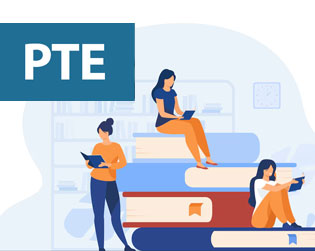Changes in International Students and new trends in Australia after COVID
- Posted by
- admin<
- Categories
- Australian Visa news
- Australian Visa updates
- Lifestyle
- Managing Finances
- News Updates
- Student Visa
- Visa Application
- Work Visa
- Date
- 30 May 2025
- Comments
- 0

The COVID-19 pandemic has drastically transformed the landscape of international education, and as Australia emerges from the most challenging period in recent history, it is essential to analyze the potential future trends that will shape the sector. This article explores these trends while outlining their advantages and disadvantages.
Key Trends in International Education
1. Hybrid Learning Models
Overview:
The pandemic forced institutions to adapt swiftly to remote learning, leading to a hybrid model that combines in-person and online classes. This trend is likely to continue as universities and colleges recognize the efficiency and flexibility it offers.
Pros:
- Flexibility: Students can balance their studies with work or family commitments more easily.
- Global Reach: Institutions can attract a broader range of students who may not have previously considered studying abroad.
- Cost-Effective: Reduces the need for physical infrastructure and allows for a larger cohort of students.
Cons:
- Limited Engagement: Students may miss out on the social and cultural experiences associated with on-campus learning.
- Technology Dependence: Not all students have access to reliable technology or the internet, leading to disparities in learning.
- Quality Control: Maintaining educational quality across both online and in-person offerings can be challenging.
2. Increased Focus on Mental Health and Well-being
Overview:
The impact of the pandemic on mental health has prompted educational institutions to prioritize student well-being, leading to expanded support services.
Pros:
- Holistic Approach: Enhanced focus on mental health creates a more supportive learning environment for all students.
- Higher Retention Rates: Providing adequate support can help reduce dropout rates among international students who often face unique challenges.
- Promotes Inclusivity: Encourages a culture that acknowledges and addresses diverse mental health needs.
Cons:
- Resource Allocation: Institutions may face budget constraints, making it difficult to provide comprehensive mental health services.
- Staff Training: Adequate training for staff and personnel is needed to handle sensitive mental health issues effectively.
- Stigma: Some students may still hesitate to seek help due to stigma associated with mental health issues.
3. Emphasis on Technology and Digital Literacy
Overview:
As education becomes increasingly dependent on digital tools, it has become essential for students to develop strong technology skills.
Pros:
- Career Readiness: Students adept in digital literacy are better prepared for modern job markets where technological skills are vital.
- Innovative Learning Experiences: Technology can enhance teaching methods, making learning more engaging.
- Accessibility: Online resources can make education more accessible to students with varying needs.
Cons:
- Digital Divide: Significant disparities exist in digital access, which can hinder some students from fully benefiting from technological advancements.
- Reliability Issues: Dependence on technology can lead to disruptions in learning if technical issues arise.
- Over-reliance on Online Resources: Students may miss out on critical thinking and interpersonal skills that come from traditional classroom interactions.
4. Revival of Short-Term International Programs
Overview:
Given the uncertainties around long-term commitments due to travel restrictions, short-term study programs are gaining popularity again.
Pros:
- Low Risk: Students can participate in programs with less financial and time commitment.
- Cultural Exposure: These opportunities allow for cultural exchange and exposure to diversity without long-term relocation.
- Flexibility in Scheduling: Students can fit these programs into their academic schedules more easily.
Cons:
- Limited Depth of Learning: Short-term programs may not provide the same depth of education as traditional programs.
- Less Immersion: Students may not fully assimilate into the host culture if participating for a short duration.
- Institutional Revenue Concerns: Short-term programs may not yield the same level of revenue for institutions as full degree programs.
5. Partnerships between Institutions and Industry
Overview:
A growing trend is forming partnerships between universities and industries to create programs that build employability and relevant skills.
Pros:
- Career Opportunities: Provides students with hands-on experience and networking opportunities, enhancing their employability.
- Curriculum Alignment: Educational institutions can update their programs based on real-world industry needs.
- Research Collaboration: Universities can benefit from industry insights to enhance research initiatives.
Cons:
- Potential Conflicts of Interest: Collaborations may prioritize corporate interests over educational quality and freedom.
- Job Market Vulnerability: Employment opportunities may fluctuate based on industry stability.
- Equity Concerns: Not all students may have equal access to these partnerships, creating potential inequities.
Conclusion
The future of international education in Australia post-pandemic is shaped by a confluence of trends that reflect evolving needs and expectations of students. While there are significant advantages to these changes, such as increased accessibility, enhanced support, and improved employability, there are also crucial challenges that institutions must navigate. Addressing these pros and cons will be essential for educational leaders as they work toward a more resilient and inclusive international education system.
In this evolving landscape, collaboration between educational institutions, industry partners, and students will be vital to ensure that Australia remains a top destination for international study while meeting the diverse needs of students from around the globe.


































